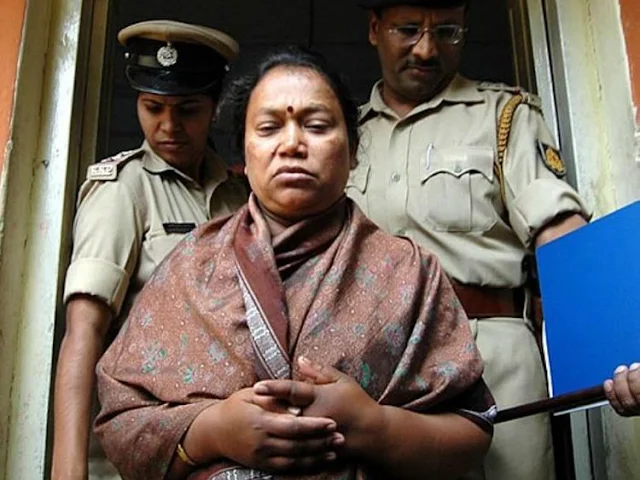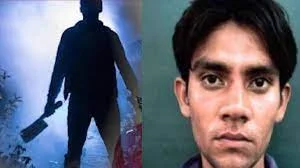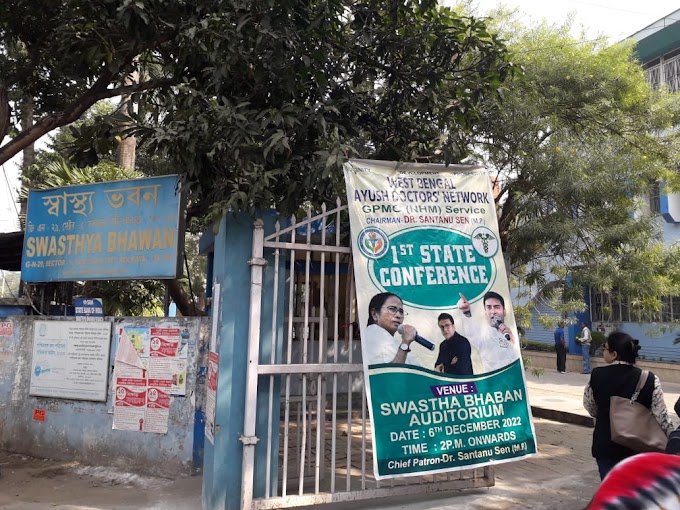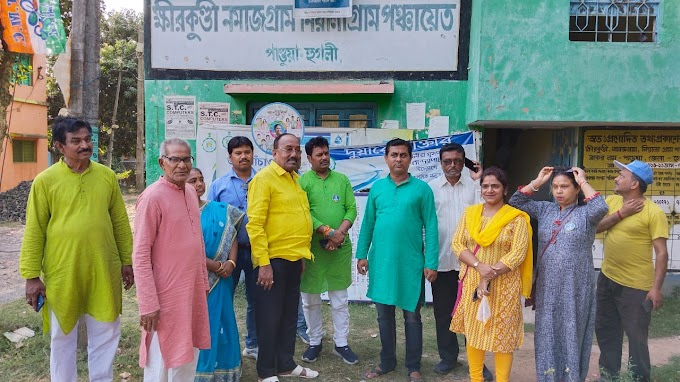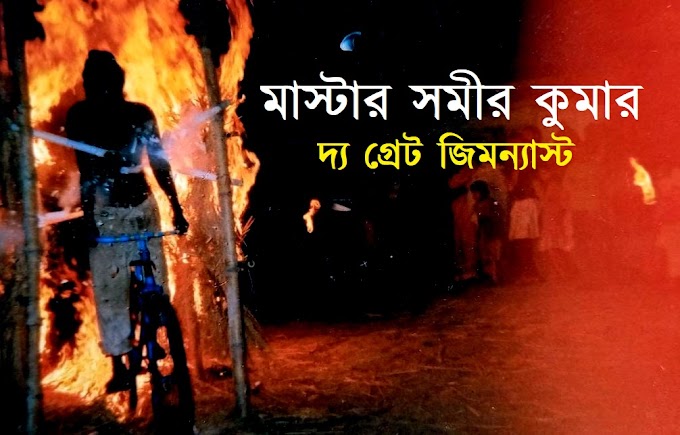By Tarak Ghosh
In India, several well-known serial killers switched professions and
became addicted to serial killing. None of them began their careers as
professional murderers. They became monsters for a variety of reasons,
including psychological ones.
Some of these serial killers served in the Indian Army, while others
were traders, car drivers, or employees of industry. But they turned into
ruthless killers. Some were obsessed with killing just 8-year-old girls, while
others were obsessed with killing women who visited the temple. Some might
choose the woman they used to ride in auto-rickshaws with. It was strange how
they were slain. Here are ten career-altering serial killers.
However, three decades later, police have still not solved the case of
a strange serial killer. They had no idea who the serial killer was who was
hitting homeless men and women on the street late at night with large stones on
their heads. This mysterious serial killer has suddenly risen in Mumbai and
Kolkata and vanished, leaving a gloom of mystery.
10. Maina Ramalu, Hyderabad,
Serial killer
It has been established that serial killers have a weird psyche. Maina
Ramalu, a serial killer from Hyderabad, was arrested on serial slaying charges when he was 48 years old. His father married a woman when he was 21 years old.
However, the woman left Ramaluk because she was madly in love with another man.
And this occurrence introduced Mohammed Qadeer to the realm of
serial killing. He had held a grudge against women since then and continued to
kill them one by one. When he was finally arrested, he killed 18 women.
Maina Ramulu was a laborer and stone cutter by profession and lived in
Hyderabad. He would also drive an autorickshaw to make up his income.
Maina Ramulu is a well-known unlawful gain-control killer. He began his
criminal career in 2003, seeking unmarried girls and promising them money in
exchange for sexual favors. After consuming toddy liquor, he frequently
targeted single ladies from local toddy compounds or wine stores.
A court sentenced him to life in prison in February 2011. He was
admitted to a psychiatric institution in Erragadda for treatment while serving
his life sentence at the Cherlapally Central Jail. However, in December 2011,
he and five others fled from that hospital. Following his escape accused Maina
Ramulu committed other killings for financial gain. He was detained in 2013,
but he was released in 2018 after an appeal petition was filed at the Supreme
Court. He committed two murders.
He was apprehended and imprisoned again, but in July 2020, he escaped
and murdered at least two women. After killing a woman called Venkatamma,
accused Maina Ramulu burned her face with fuel till it was unrecognizable. On
January 4, 2021, Ramulu was arrested for the murder of a woman in Jubilee
Hills, Telangana's Hyderabad.
9. Beerman
Another serial killer is Bearman. He would kill his victim by making
him drink beer. And after the murder, he would leave an empty can of beer at
the scene. And he was known as 'Bearman' for his strange behavior.
Ravindra Kantrole was his real name. He was apprehended by police in
2007, but his murder spree began in 2006. Between October 2006 and January
2007, he killed seven people. Between October 2006 and January 2007, six
persons were slain in Mumbai, and in each case, a bottle of beer was discovered
by the body. Ravindra Kantrole was convicted of one of the killings, that of a
homeless man, in January 2008. The man had over 20 stab wounds on his chest,
abdomen, arms, and thighs.
Kantrole was accused of three of the killings but acquitted of two of
them. When two children were discovered dead at the Nariman Point Fire Brigade
depot and by the sea near Maker Tower in Cuffe Parade, many people in the Cuffe
Parade and Colaba areas had their DNA samples examined by police. They also
considered looking into Ravindra Kantrole, whose name had come up during the
investigation.
This is the first instance where scientific evidence against the
accused outweighs circumstantial evidence. To strengthen their case, the police
attached findings from brain mapping, narco-analysis, and polygraph testing.
Due to a lack of evidence, the Bombay High Court released him from any
participation in the killings in September 2009. Six murders are still
unsolved.
8. Cyanide Mallika
Cyanide Mallika was India's first female serial killer. However,
Cyanide Mohan, a male serial killer who became well-known in India, killed only
women. Similarly, 'Cyanide Mallika' targeted women. She used to go to the
temple and kill one woman after another to obtain jewelry. Her target was the
women who came to pray at the temple. Cyanide Mallika would go to the temple
and find a woman dressed in jewelry. She used to earn trust by talking to her.
Then kill her by applying cyanide.
She was 46 when he was arrested. Her real name was KD Kempamma.
Kempamma lived in Kagalipura village, not far from Bengaluru. Her husband was a
tailor. She established her own chit-fund company. However, the spouse
abandoned her for a variety of reasons, including disagreements with her
husband. She was then evicted from the residence. All of this occurred before
1998. She then began working as a maid and committing little thefts.
Kempamma's first killing was committed in 1999. She has killed five
more women, the majority of whom were 'in trouble' and fell for her con of
offering to pray for them.
Kempamma was caught in the year 2000 while attempting to steal valuable
goods from a residence. After serving only six months in prison for this act,
she embarked on a killing spree. She was arrested in 2006 for the murder of
five women in 2007. In 2010, she was sentenced to death. However, in 2012, it
was commuted to life imprisonment, which she is presently spending at the
Parappana Agrahara Prison.
7. Raman Raghav, India's Jack
Reaper
Mumbai's notorious serial killer preyed on the homeless and those
living on the streets. He was the assassin who set a busy metropolis on edge,
spreading dread and anxiety across the city. Raman's murdering spree in the
1960s prompted the entire lockdown of a city, with people choosing to stay
indoors rather than be bludgeoned to death by him. He would bash his victims to
death by slamming their skulls against hard, brutal items.
The majority of the killings occurred in the 1960s near railway tracks.
The streets in the locations where he worked were teeming with fear. When he
was captured, he acknowledged killing roughly 40 people, but specialists who
investigated the case believe he may have killed more.
Raman's real name was Raman Raghav, though he went by several aliases,
such as Sindhu Dalwai, Anna, and Thambi.
His victims were all poor people who slept on the streets or lived in
old huts and temporary shanties in the city's northern outskirts. Men, women,
and children—even infants—were among them.
They were assaulted while sleeping at night, and all of them perished
after their brains were bashed with "a hard and blunt instrument,"
said Ramakant Kulkarni, the young police officer who took over as the crime
branch's chief in 1968, and whose squad ultimately apprehended Raghav on August
27, 1968
6. Auto Shankar
None of the multiple terrible killings that afflict Chennai's recent
past compares to those committed by "Otto" Shankar and his gang
between 1987 and 1988.
Shankar was born in the Vellore district village of Kangeyanallur in
1955 and raised in Periyar Nagar. Shankar began his career as a painter before
taking up illicit cycling from the small coastal towns of Thiruvanmeyur and
Mamalapuram to Chennai. His auto also delivered "savaari" to young
women, who were eventually exploited by the meat trade. Shankar was involved in
terrorism and crime in Madras.
Nine girls went missing from Thiruvanmayur in late 1988. The police,
who were fully conscious of Shankar's exploits, started to investigate the
crime. He said that all of those girls had begun working in sex rackets and had
fled their homes of their free choosing. However, as the girls' families
continued to dispute the claim, police were forced to investigate. Nothing was
known about the young girls.
Shankar's escape from prison effectively ended all prospects for his
release. In addition, the president declined to sign an apology for the death
penalty. Shankar Dayal Sharma sat in the president's chair at the time. Gauri
Shankar, aka Auto Shankar, was hung on April 27, 1995, at Salem prison, just
days after her mercy petition was denied.
Shankar said in court that movies were the driving force behind his
crime. He was motivated by the criminality shown in movies. He had to be like
the bad guys in movies. In a lecture, the then-Additional Director General of
Police stated that Shankar's moral corruption was also caused by movies.
5. Moninder Singh Pandher, king of horror.
As many as 50 children and young persons went missing in and around
Nithari during the time, 2005- 2006. but the remains of only 19 have so far
been discovered, that too after much prodding from the residents. Yet, the
question of serial killing remains one of the most ill-understood aspects of
violent crimes that have a pattern, but not enough motive.
Nithari killings are a testimony to the limits of criminal psychology,
social anthropology as well as forensic sciences to adequately comprehend what
prompts human beings to resort to such heinous crimes again and again. Mere
sociological explanations, or even establishing "without a doubt" the
criminal responsibility of the perpetrators, fail to address the extremeness of
the cruelties displayed, again and again. Though on multiple occasions, the
Nithari serial killings have been dubbed "barbaric", the distinction
between what's "civilized" and what's not is blurry and false.
Nithari case is one of the most horrifying and gruesome cases of 2006.
This case involved the commission of heinous crimes like sexual abuse, murder,
cannibalism, and attempted necrophilia. Many believe that Moninder Singh
Pandher who owned the D5 house where girls were repeatedly raped, killed,
sliced up, and their bones dipped in a chemical solvent before being dumped in
the drain, was the man behind the blood-curdling Nithari killings.
The case came to light after a continued series of disappearances of
children (both boys and girls) and teenagers from the Nithari village in the
years 2005 and 2006. Investigation of this case ultimately lead to the tracing
of the bungalow of Moninder Singh Pandher and this caused the disappearance
mystery of the Nithari village to unfold one step after another.
On December 30, 2006, Moninder Singh Pandher, a businessman and the
owner of D5, and his servant Surender Koli were detained for questioning in
connection with the missing case of 20-year-old Payal.
Koli is accused of having lured 16 children and women into the house of
his employer Moninder Singh Pandher in Noida Sector 31, where he allegedly
raped and murdered his victims before dismembering their bodies and throwing
the remains into a nearby drain.
The Allahabad High Court acquitted Moninder Singh Pandher, one of the
main convicts in a Nithari murder case. The court upheld the death sentence of
his domestic help Surinder Koli. Both Moninder Singh Pandher and Surinder Koli
were given the death sentence for raping and murdering 14-year-old Rimpa Haldar
who was murdered on February 8, 2005.
4. Ravinder Kumar, Truck helper
to serial Child killer
Another Child killer of recent India is Ravinder Kumar, a 28 years old
young man, who embarked upon a 5-7 year raping and killing spree until his
arrest on 19 July 2015. He targeted the children of poor families in Delhi,
Mundka Badli, Begampur, and Vijay Vihar areas and confessed to killing more
than 30. Police have mounted a massive operation to know if the cases of
missing children filed in the past five years in Vijay Nagar, Bawana, Narela,
Alipur, Begumpur, Kanjhawala, Samaypur Badli, and other areas are related to
this case.
His victims were primarily aged 4-6 years old. Police were able to link
him with 15 of his confessed crimes. He would lure children with candies and
kill them if they resisted. Worse, he would have sex with their bodies, making
him suffer from necrophilia. His crimes commenced with the rape and murder of a
laborer's child from Samaypur Badli in 2008. A laborer's girl child from a
Delhi Metro construction site here was his first victim. He took her to an
isolated spot, had sex with her, and then dumped the body after killing her. Police,
however, could not find a record of the crime as it was not reported.
When Ravinder committed his first crime, he was just a boy of 17,
living with his parents and three of his brothers in a tiny two-room house in
North Delhi. Before that, they had been living at Ganjduware village in Uttar
Pradesh since 2007. His father worked as a plumber in an unorganized sector.
His employer offered him lower wages and naturally, he failed to run his
family. So, Ravinder's father decided to leave the village and moved to Delhi
to start a new future. Ravinder dropped out of school after Class 5, but he was
diligent and soon he got a job as a truck cleaner. The family survived largely
on the income of Ravinder. His boyhood was very disturbing and he became addicted
to drugs. He was also obsessed with blue films which were shown to him by
friends and alcohol influenced him to commit the crimes. He had porn films on
his phone, which he used to see before committing his assaults. From his
teenage, he was more than a monster. He did not care about family ties was
obvious as the victims who were assaulted and then murdered by him had called
him uncle or brother.
Once Ravinder was asked if he ever felt guilty about what he had done.
He replied, "Yes, the day after the crime, I would think what I'd done was
wrong and that I would stop. But then I would get drunk again and lose
control."
Ravindra Kumar was a serial drug addict who used to consume locally
manufactured hooch, glue, and correction fluid which made him lose control of
his brain. "When I lose control of my brain, I get sexually charged. I go
out for a long stroll during which I look for vulnerable children. Sometimes, I
walk for more than 10 kilometers in one go without knowing my destination or
the place where I am heading," Kumar confessed to the interrogators.
3. Darbara Singh, An Army man turns into a Serial Child-Killer
During a period of 7
months (April to October 2004), twenty-three children of non-Punjabi migrants,
most of them below the age of 10, went missing from Jalandhar City of Punjab, India. Many of these children were
sexually assaulted and 17 of them were killed, six children managed to escape.
His preferred time to kidnap the children was between 10 am and 12.30 pm when
most migrant laborers were away in factories. His most common method of killing
was slitting to death before finally having sex with them.
During the period of 7 months (April to October 2004), twenty-three
children of non-Punjabi migrants went missing from Jalandhar, India. Many of
these children were sexually assaulted and 17 of them were killed by Darbara,
six children managed to escape. Darbara also loved to rape dead bodies. He was
such a devilish killer that his family refused to claim his body after he died
in 2018.
Darbara Singh was a native of Jallupur Khera village of Amritsar District, India. He joined the
military at first chance and took out his aggression there. He was an employee
of the Mechanical Engineering Services (MES) unit of the army at Kapurthala,
Punjab. In 1975, he was accused of lobbing a hand grenade at the house of his
senior officer Major V K Sharma, after having an altercation with him. The wife
and teenage son of the officer were seriously injured in the attack. Singh was
dismissed and arrested; however, he was acquitted after a trial. Singh had
three children; his wife expelled him from their house, because of his
"bad habits".
Darbara had developed a grudge against migrants, holding them
responsible for wasting many years of his life. He targeted the children of
Model Town, Leather Complex, Basti Shiekh, Basti Peerdaad, Basti Mithu, Urban
Estate Phase II, Jallowal Colony. All of the children came from laborer
families. To take his 'revenge' against the migrants, he started targeting
their children around the area. His victims were always little children who
could be lured to secluded areas with promises of buying something or toffees
They were from small areas of Jalandhar city. He chose the small areas because
small-town dwellers were an easier target for him, precisely because there was
a sense that everyone "knows" everyone else and no one wanted to
believe that the quiet man next door, who always bought toffees for the
children, might be a serial killer.
He chose children who were alone and away from their homes. Most of
Darbara's victims were children below 10. The children were threatened with
death, repeatedly sexually assaulted,
In October, the police apprehended Darbara Singh, who had earlier been
jailed for nearly a decade in another case involving sexual assault and
attempted murder of a child. Singh allegedly confessed that he was behind all
these abductions, sexual assaults, and murders in 2004. He was convicted for 2
of the murders, and sentenced to life. He was also convicted of 2 more murders;
in this case, he had led the police to dead bodies after his arrest. He was
awarded a death sentence in this case but was later acquitted by the High Court
because of insufficient evidence. He was also acquitted in 4 more cases because
of insufficient evidence. He died in 2018 while serving a life sentence, with
some of the cases pending trial.
2.Amarjit Sada: World's youngest serial killler
The youngest serial killer in the world is an 8-year-old boy from
Bihar, India. He is Amarjeet Sada, whose life was steeped in poverty. Sada
committed his first murder when he was seven years old. One psychologist
described him as a "sadist who derives pleasure from inflicting
injuries" at the time of his capture.
Amarjeet Sada is suspected of killing three individuals, including
family members, between 2006 and 2007, when he was eight years old. Amarjeet
was born in 1998 to an impoverished Indian couple who worked as laborers in the
Bihar town of Begusarai. His parents barely had enough money to make ends meet,
making life tough for the family. His mother gave birth to a baby daughter when
he was seven years old. They now had four mouths to feed, and with their low
income, the family's survival became much more difficult.
Sada reportedly killed his six-year-old cousin, his uncle's daughter,
in 2006. He is also suspected of murdering his baby sister, who was just eight
months old at the time. His other victim was a six-month-old infant girl named
Kushboo who resided in the area. Sada was said to have grinned a lot and shown
no remorse while in police custody after admitting to murdering his sister and
his cousin. Amarjeet is now about 23 years old and lives under a new identity.
Guess who will be the No. 1?





